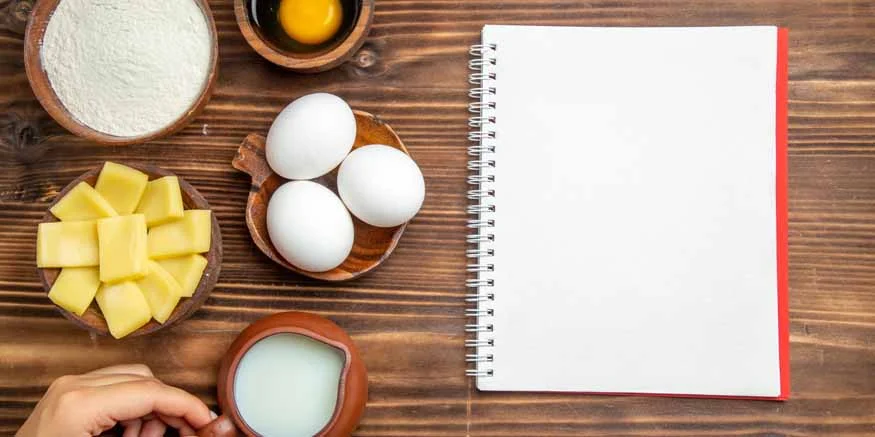Mathematics is an essential skill to develop in everyone’s life. A strong foundation in maths enhances understanding, improves memory, and sharpens problem-solving abilities. Maths intersects with various subjects. For example, in science, it helps with measuring, graphing, and counting; in history, it helps organise dates chronologically; in geography, it is used to understand areas of land; and the study of geometry helps us comprehend the Earth’s water-covered areas. It’s no surprise that maths strengthens analytical, reasoning, and logical thinking.
Now, let’s explore the significance of maths in cooking. Yes, you read that right!
Cooking is a vital skill for sustainability. Simple multiplication and division make the process smoother, easier, and more precise. Understanding ratios and fractions speeds up the cooking process. A solid foundation in maths makes cooking easier to grasp.
The Importance of Multiplication and Division in Cooking
Multiplication and division are crucial in cooking as they enable us to adjust recipes for different numbers of people and ensure accurate measurements. Multiplication also aids in creating new dishes, while division helps simplify food preparation.
Here are a few examples of how multiplication and division are important in cooking:
- Adjusting recipes: Recipes can be scaled up or down using multiplication and division, depending on how many people you are serving.
- Accurate measurements: Using accurate measurements with basic maths skills ensures a perfect dish. Inaccurate measurements can easily ruin a recipe.
- Cost management: Strong maths skills help manage budgets and calculate food costs.
- Ratios: When recipes call for a cup of flour or two cups of water, understanding ratios ensures the recipe’s success.
Culinary Maths
Culinary maths is an emerging field that combines kitchen science with mathematics. It starts with mastering the basics of addition, subtraction, multiplication, and division in cooking. Culinary maths is used to maintain consistency in taste, control portions, and calculate food costs. Improved maths skills lead to better results in the kitchen, and maths can even help in creating new recipes and fusion dishes. Adding just a few ingredients can completely alter a dish’s flavour.
Culinary Maths Essentials
- Understanding basic measurement abbreviations (e.g., ounces (oz), kilograms (kg)).
- Familiarity with basic conversions (e.g., pints, cups, gallons).
- Knowing the difference between dry and wet ingredients.
- Mastering conversions between weight and volume (e.g., a cup of flour weighs differently from a cup of water).
Key Concepts for Culinary Maths
- Recipe Conversion: Recipes often need ingredient adjustments, whether increasing or decreasing quantities. Multiplication or division is used to get consistent results.
- Standardised Recipes: Standardising recipes means using the same amount or quantity of ingredients every time. Maths helps calculate the precise quantity needed to maintain the dish’s flavour.
- Edible Portion Calculation: This concept helps understand how much of each perishable ingredient is required for the portion being prepared, minimising food waste.
- Measurement Conversion: Recipes frequently call for wet ingredient conversions. Simple multiplication or division helps maintain a recipe’s integrity, regardless of quantity.
Mathematics is an unsung hero in the culinary world, aiding chefs, cooks, and home chefs in creating delicious meals with precision and ease.
The Joy of Baking with Maths
Baking bread, cakes, cookies, or muffins requires a strong foundation in maths. Bakers need excellent calculation skills to transform their recipes into mouth-watering creations. Baking is the perfect blend of maths and cooking, where concepts like fractions, conversions, and multiplication are essential.
Let’s explore a few examples of how maths is used in baking:
- Utensil size: The size of the utensils depends on the quantity being prepared.
- Scaling recipes: Measurements often need to be scaled up or down depending on whether the recipe is doubled or halved, using multiplication or division.
- Converting units: Recipes may use different measurement units like ounces, grams, or cups, requiring conversion through multiplication or division.
- Dividing batter: When baking cupcakes, for example, the batter must be evenly divided to ensure consistent results.
Maths in Food and Nutrition
Mathematics plays a crucial role in determining the right proportion of ingredients to achieve the desired texture, taste, and nutritional value of food. By applying mathematical concepts to an individual’s diet plan, one can manage health and well-being effectively. Concepts such as ratios, fractions, decimals, and percentages are frequently used in the nutritional industry.
- Meal planning: A dietician uses multiplication and division to plan meals based on an individual’s body mass, calculating the necessary intake of proteins, carbohydrates, and other nutrients.
- Calorie counting: Maths helps calculate daily energy needs and track food intake by adjusting portion sizes.
- Portion control: Maths aids in determining the correct portion sizes to meet an individual’s nutritional needs, ensuring efficient diet management.
- Understanding food labels: Reading and calculating nutritional values from food labels is a crucial skill today, and maths helps make sense of these numbers.
In conclusion, a strong foundation in multiplication and division enhances cooking skills, which can lead to financial savings, reduced food waste, and a healthier lifestyle.
Also Read: How Fractions Help Us Divide and Enjoy Pizza and Pies









